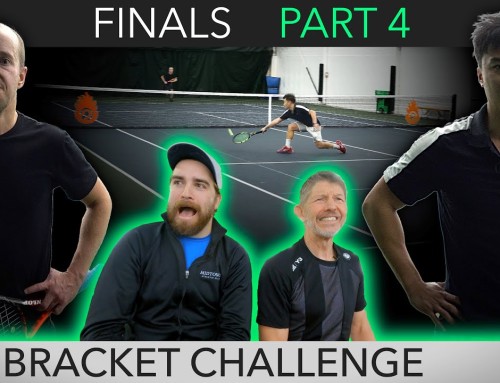An unfortunate truth about tennis is that playing lots of it will lead to injuries.
There’s just no way around it due to the repetitive nature of the pounding that both our upper and lower body takes.
The good news is you CAN minimize the injuries you get as well as how long they stick around by being vigilant about your habits on and off the court.
That’s what this special series of emails is all about.
In Part 1 I shared a message focused on tennis injury prevention.
If you haven’t already read it definitely do so right here.
Today we’ll focus on what to do once you have pain and it sticks around – how to rehabilitate your injury effectively.
Let’s dive right in.
—————————————
Key 1 – Annoyance vs Pain
—————————————
So many of you need to read this and take it seriously…
Don’t be a hero, be “macho”, or push through pain for any other reason.
There’s a difference between a little twinge or tweak and deep, nagging pain.
The latter should always be respected and taken as a true sign of something being wrong. Your body is trying HARD to talk to you! Don’t ignore the message!
I can’t tell you how many stories I’ve heard over the years from players who played through pain only to walk away with a life changing injury. One that never allowed them to pursue the game fully again.
Please don’t let that happen to you. Respect the pain, take a step back and get curious about WHY it’s there.
————————————————–
Key 2 – Upstream and Downstream
————————————————–
This concept has been a total game changer for me.
The thing you want to remember is this: where the pain is coming from isn’t always where the problem is.
In other words – that low back pain may very well be a SYMPTOM of the true problem which is “upstream” or “downstream” from where you actually feel it.
For me, low back pain was caused by chronically tight hamstrings.
Stretching, massages, and treatments of all kinds focused on my lower back would bring temporary relief but the pain would return days later. Over and over.
It wasn’t until I loosened my body above and below where I was feeling pain that I finally got long term relief.
———————————————-
Key 3 – Expert, Specialized Input
———————————————-
If you try lots of things to remedy your discomfort at home but the injury comes back more than two or three times then please seek professional help immediately.
By “professional help” I mean somebody who deals with athletic injuries every day.
And even BETTER somebody who deals with athletic injuries caused by TENNIS specifically.
That can be tough, especially if you live in a smaller town, but more than likely you have access to somebody who works with baseball, basketball, or football athletes all the time.
A general massage therapist or chiropractor can be great for light to moderate strains or sprains but when it comes to any kind of chronic, reoccurring pain seek out somebody who knows biomechanics and has a sports medicine degree.
They have the knowledge and experience to target exactly what the problem is with much more speed and precision.
That being said…
——————————————
Key 4 – Get Lots Of Opinions
——————————————
If the very first visit to a professional, specialized practitioner gives you the solution to your chronic pain then GREAT!
Do a happy dance.
If you find yourself going back to that same practitioner over and over for the same problem and it just won’t go away then don’t be hesitant about getting other opinions.
Trust me, it’s not only OK but it may be the only way you find relief.
The reality is the human body is incredibly nuanced and complex. Even the most experienced sports medicine expert can miss the mark with diagnosis or rehab prescription.
I’ve experienced this first hand many times. In fact, for some injuries I spent years trying different specialists with different backgrounds before I finally found the solution.
The last thing I want for you is to get stuck in a pattern of pain and frustration.
Please don’t feel like you’re disrespecting a practitioner by getting more opinions elsewhere! Sometimes its the only way to get back to 100%.
———————————————-
Key 5 – Make Recovery Your Job
———————————————-
It’s your body, your pain, and at the end of the day YOUR responsibility to take action to fix it.
That means making appointments, showing up for those appointments, DOING the rehab work and being disciplined about your return to the court.
I understand. It’s really hard.
It’s easy to get dejected, frustrated, and lose motivation when pain keeps coming back over and over.
You have to ask yourself what kind of life you want to lead. One where you accept those pains and live with them or one where you overcome physical obstacles no matter how many tries it might take.
Personally, I don’t want to accept limitations put on what I can do with my body.
Obviously time and age are realities we all have to accept but within that reality there’s SO much you can do to maximize your potential. No matter how many years you’ve been blessed with breath in your lungs.
Keep fighting. Keep doing the work. Keep seeking out new and different perspectives until you find freedom from your pain.
That’s all for today but Part 3 is coming tomorrow!
Thanks for reading and enjoy the rest of your Saturday.
Yours Truly,
-Ian



